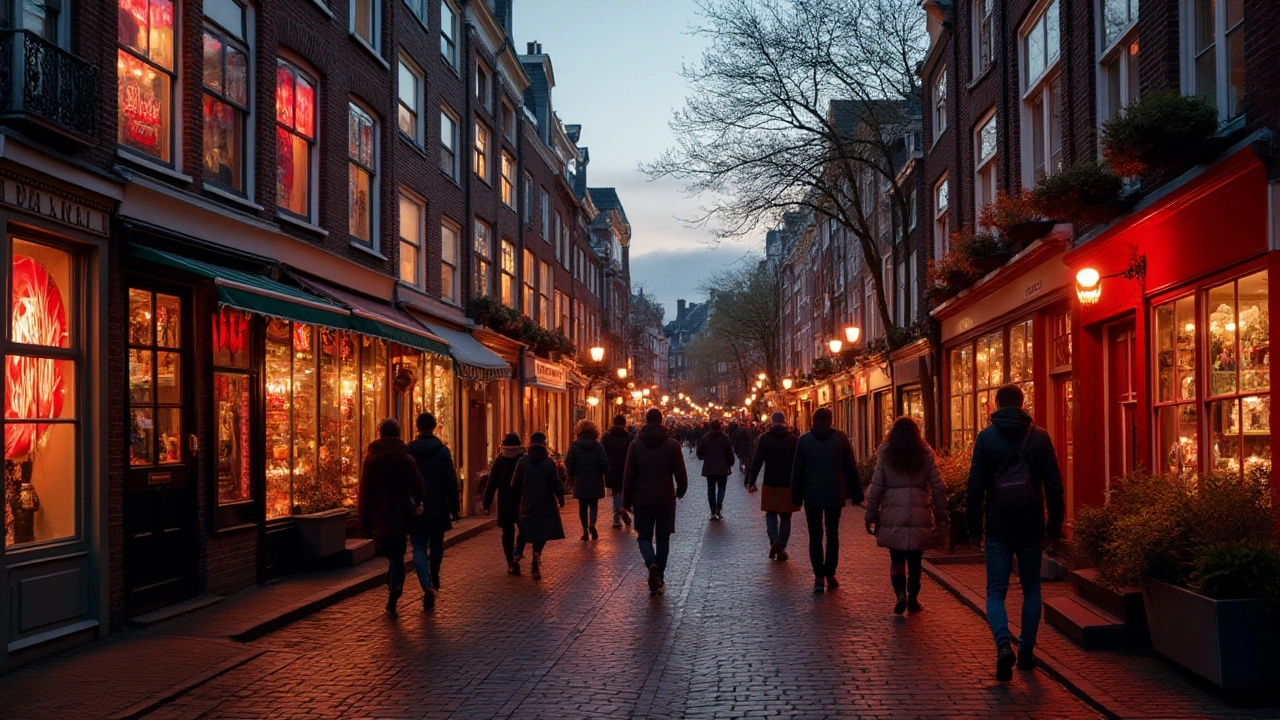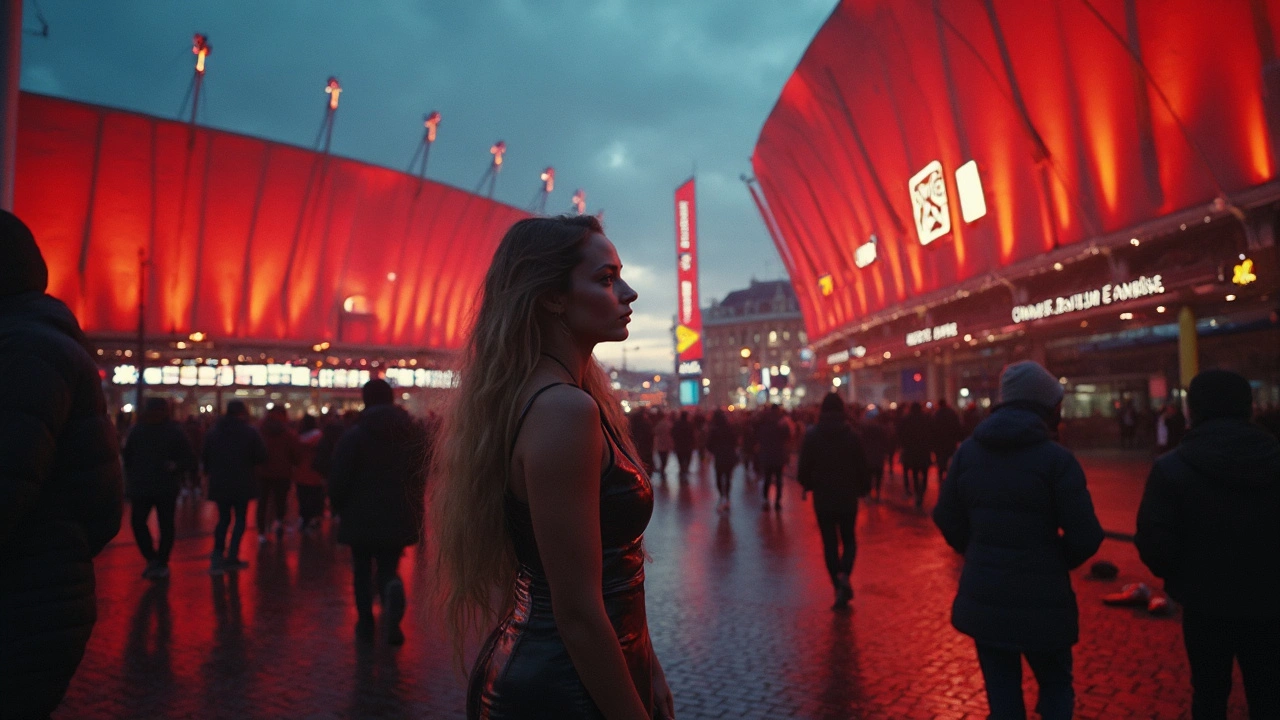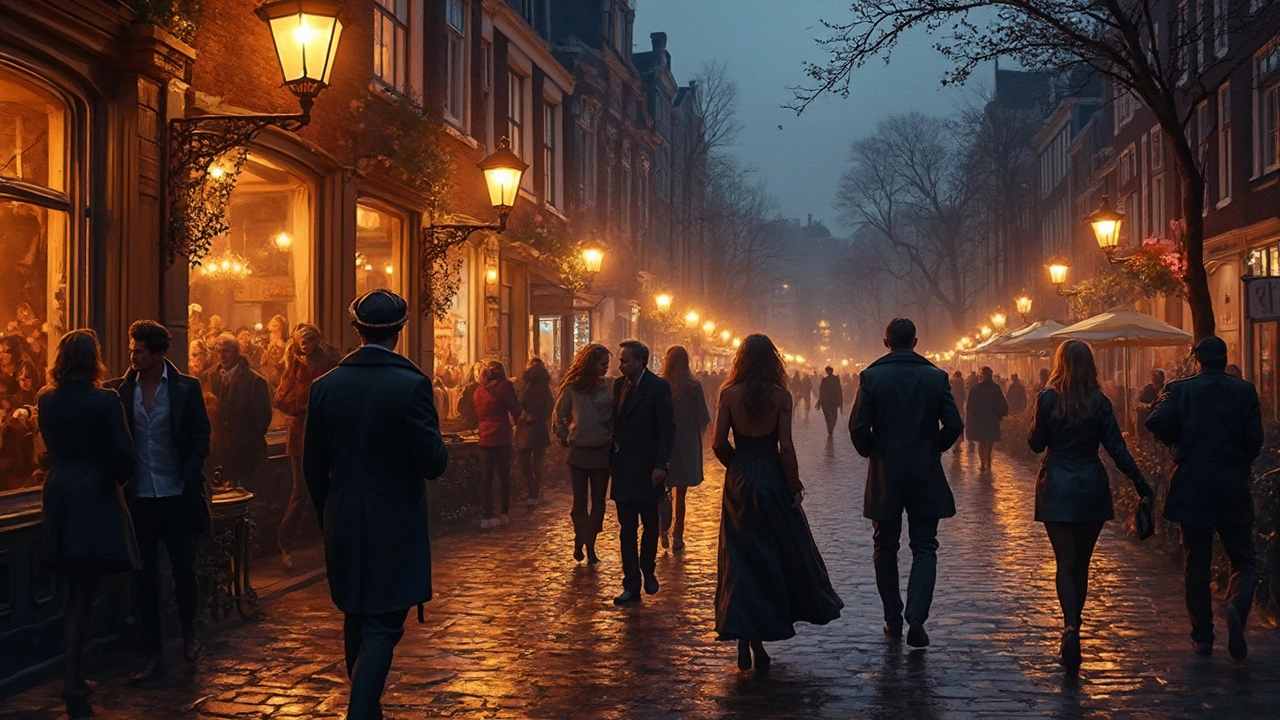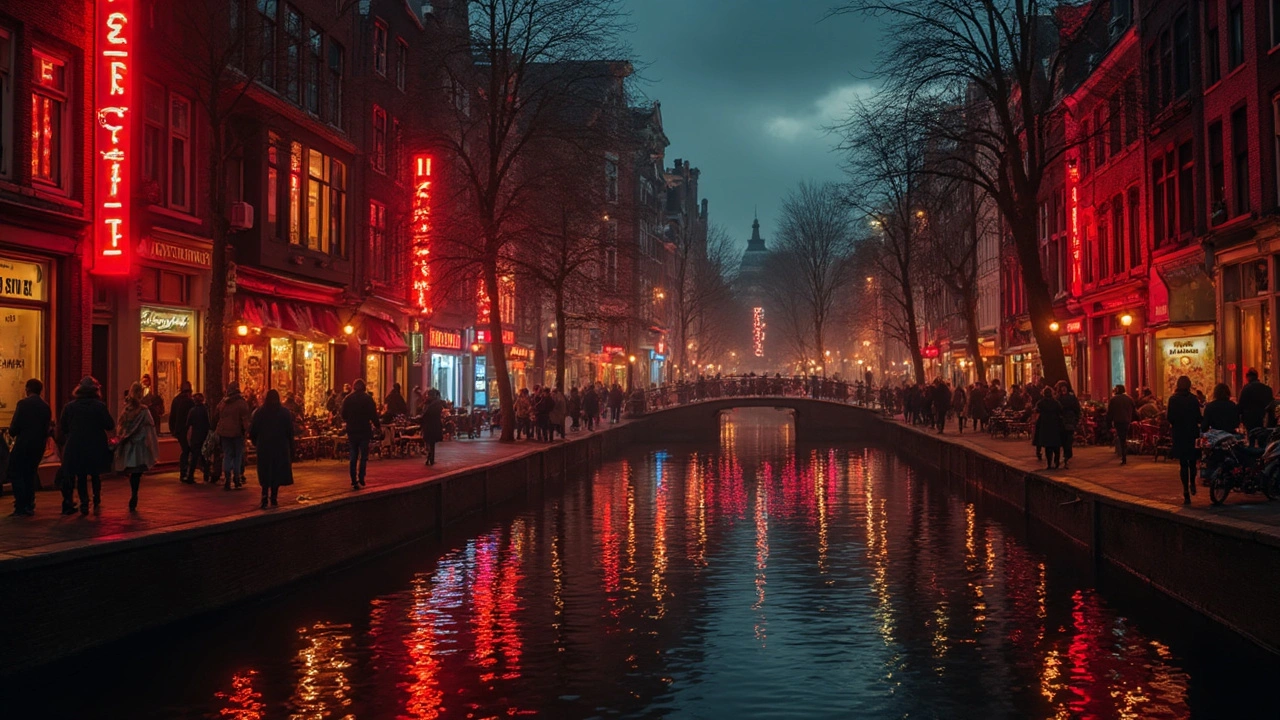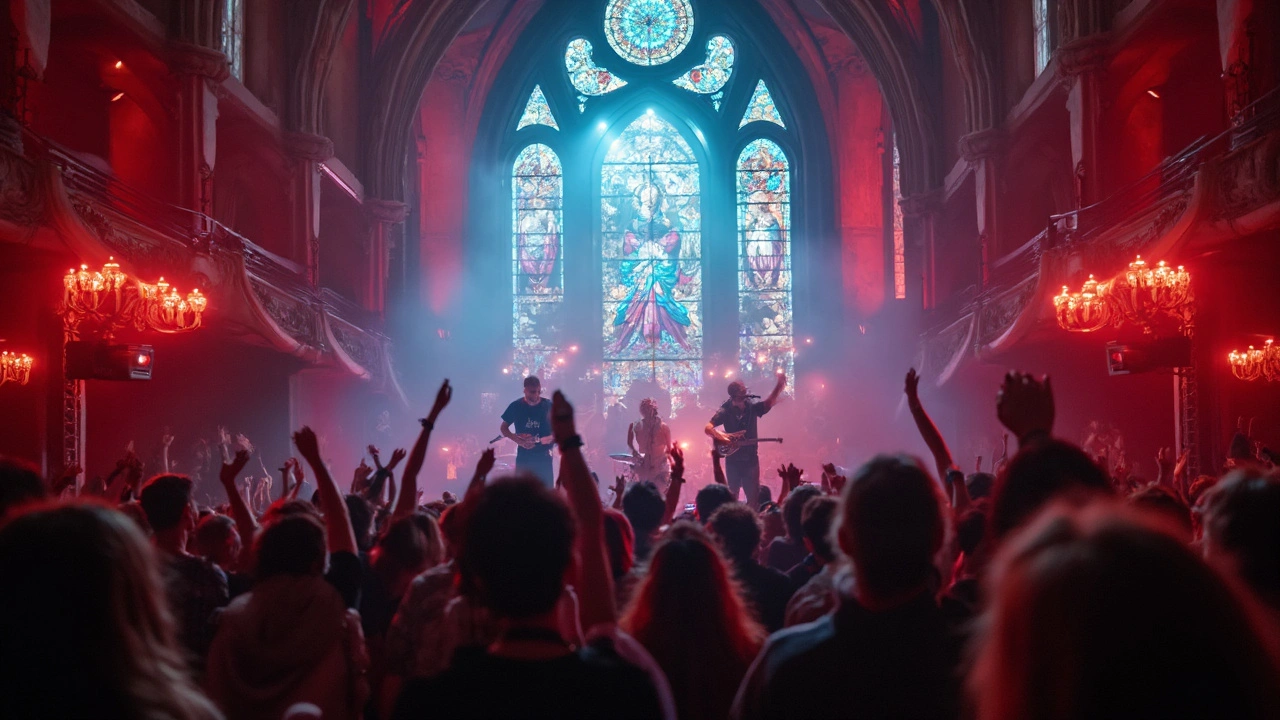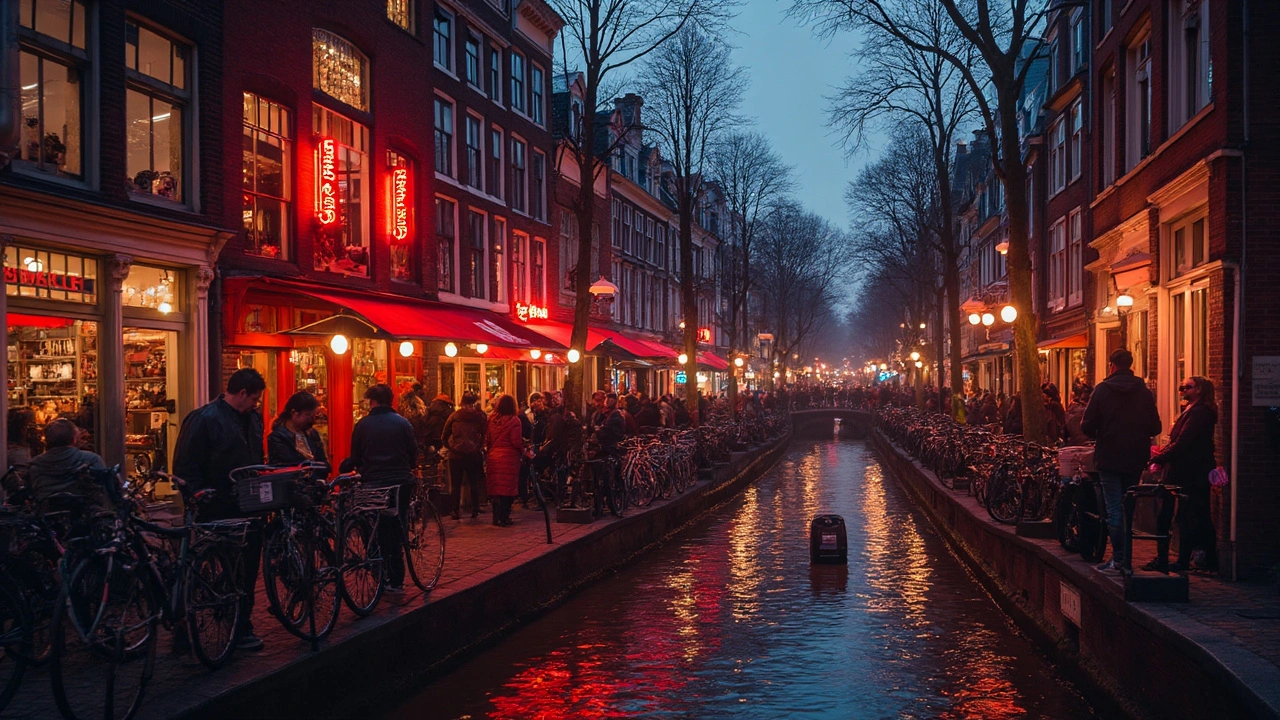
If you’re visiting Amsterdam, chances are you’ll end up wandering through De Wallen—the city’s Red Light District. It’s as much a tourist spot as the Rijksmuseum, but a lot more in-your-face. Forget what you think you know from movies. In Amsterdam, the Red Light District is shockingly organized, almost clinical, and right in the heart of the old city center. You’ll be stepping over the old cobbles, surrounded by canals, centuries-old buildings, and—just like that—glowing red windows with sex workers inviting you in. This is no sketchy alley. The district is baked into Amsterdam’s day-to-day life, with bakeries and cheese shops right next to adult theaters and cannabis cafes.
Trust me, it’s perfectly safe. Dutch rules are strict—workers are registered, health checks are routine, and police have zero patience for troublemakers. Want to snap a selfie under the neon? Don’t. It’s a massive no-no to take photos of sex workers or their windows. You’ll be warned, maybe yelled at, and probably shamed on the spot by locals and staff. If you just want to walk around and gawk, no one will hassle you as long as you’re respectful. If you’re curious about other European hotspots—like Reeperbahn in Hamburg, or Prague’s discreet Erotic City—they’re totally different flavors. De Wallen is open, direct, and weirdly normal for such an adult zone.
- What Makes Amsterdam’s Red Light District Different?
- How De Wallen Compares to Hamburg’s Reeperbahn
- Dutch Laws, Safety, and Etiquette: Must-Knows
- Navigating De Wallen: Insider Tips for Tourists
- The Vibe: Locals, Visitors, and Cultural Changes
What Makes Amsterdam’s Red Light District Different?
The Amsterdam Red Light District isn’t just the most famous in Europe—it’s genuinely one of a kind. Locals call it De Wallen, and it’s right in the historical heart of the city, surrounded by bike traffic, student bars, and the Old Church (Oude Kerk) that’s been standing since the 1300s. Nowhere else are sex work, nightlife, and everyday life so blended. You’ll see tourists from all over, but also Dutch folks grabbing groceries or heading to dinner right next to the action.
The whole zone is organized and regulated by the city, which means legal sex work—and real protections for workers. Windows are rented by the hour or day, and workers decide who comes in. Every worker is required to register with the local government, and health checks are routine. Safety is tight; CCTV covers almost every corner, and plainclothes police show up if you step out of line. Drunk or rowdy tourists get bounced fast. This approach keeps problems to a minimum and gives the industry an air of normalcy you’ll rarely find elsewhere in Europe.
Where other red light areas might feel dodgy, De Wallen is well-lit, busy, and mixed with everything else Amsterdam has to offer—canal cruises, pancake cafés, cheese shops, quirky museums, and smartshops selling legal truffles. You can stroll from the Erotic Museum (Oudezijds Achterburgwal 54) to FEBO for a fried snack, all within a few minutes. During the day the neighborhood feels different—more relaxed and even family-friendly with daytime tours running along the canals.
- Only licensed windows are allowed—about 300 in central Amsterdam.
- The area is highly walkable—most sightseeing routes pass right through it.
- Cannabis is legal for personal use in coffeeshops, adding another unique layer to the nightlife.
- Prostitution is legal, but street solicitation is banned. Only window work is allowed in De Wallen.
- Workers can refuse anyone, anytime, for any reason—no questions asked.
What’s really surprising is just how open the local attitude is. Sex work here isn’t hidden away. The city even launched projects like the Prostitution Information Center (PIC), where visitors and locals can ask questions and learn how the industry operates in the Netherlands.
| Stat | Details (as of 2024) |
|---|---|
| Number of legal windows | Approx. 300 |
| Annual visitors to De Wallen | Millions (~3.1 million) |
| Registered sex workers | Over 700 in central Amsterdam |
| CCTV cameras in district | 80+ |
| Street prostitution | Not allowed |
The bottom line? Amsterdam manages to keep its Red Light District safe, regulated, and part of the city’s everyday vibe. For anyone curious about how it all works, De Wallen manages to be both an adult playground and a key part of the city’s culture.
How De Wallen Compares to Hamburg’s Reeperbahn
If you’ve already strolled Amsterdam’s Red Light District, it’s natural to wonder how it stacks up next to Germany’s most famous adult zone—the Reeperbahn in Hamburg. These places run on similar ideas but feel totally different once you walk the streets.
First off, the Amsterdam Red Light District (locals say “De Wallen”) is way more in-your-face about sex work. The red-lit windows with sex workers inside are out in the open, right next to bars and canals, blending adult entertainment with classic Dutch daily life. In contrast, the Reeperbahn is one long, pulsing street packed with everything—strip clubs, sex shops, theaters, nightclubs, and live music bars. The famous Herbertstraße, just off the Reeperbahn, even blocks off women and minors (it’s for men only). You won’t see that anywhere in Amsterdam; De Wallen is open to everyone, including women and tourists of all ages.
Here’s how these two places look side by side:
| Feature | De Wallen (Amsterdam) | Reeperbahn (Hamburg) |
|---|---|---|
| Sex Work Display | Windows with sex workers, highly visible | Mostly indoors, shopfronts, Herbertstraße windows (men only street) |
| Atmosphere | Old city vibe, relaxed, canals and history | Loud, party strip with neon lights, more urban/modern |
| Who’s Welcome? | Anyone—locals, tourists, groups, couples | Mixed, but Herbertstraße is restricted |
| Nightlife | Bars, coffee shops, peep shows mixed in | Heavy clubbing, live music, adult shows, huge variety |
| Safety | Strict police presence, friendly to tourists | Lots of police, but more rowdy, some caution at night |
| Local Laws | Sex work is legal, workers registered, health checks | Legal but more hidden, some related activities less regulated |
One wild fact: Amsterdam’s De Wallen is way older—dating back to the 1300s, while the Reeperbahn got wild only in the last century. If you’re someone who enjoys clubbing, Hamburg is your place. But for genuine legal sex work in a chill environment, De Wallen takes the prize.
- Tip: Buying drinks on the Reeperbahn? Watch your wallet—prices jump at clubs and cabarets.
- In De Wallen, you’ll see couples strolling at all hours. In Hamburg, expect more bachelor parties and less of a date-night vibe.
- Neither place tolerates photos inside adult venues. Both districts have undercover police and visible security.
If you only have time for one, Amsterdam’s Red Light District is more laid-back and suited to wandering, while the Reeperbahn is a full-on nightlife experience, especially for those who love loud music and crowds.
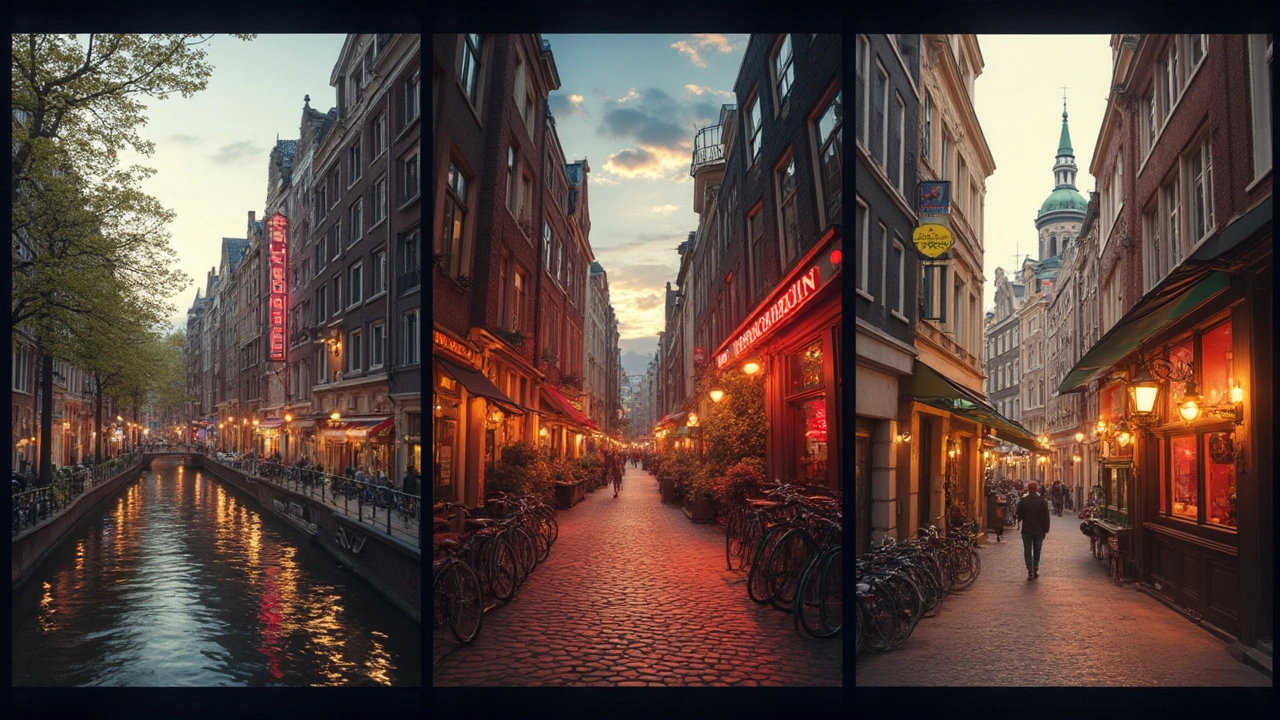
Dutch Laws, Safety, and Etiquette: Must-Knows
The Dutch don’t mess around when it comes to rules in Amsterdam’s Red Light District. Prostitution is legal, but under tight regulations. Every window worker in De Wallen is registered, pays taxes, and gets regular health checks. Brothels can only operate with city permits, which are hard to get. If you see a red-lit window, you can bet it’s licensed.
Safety is the big priority here. Police patrol constantly, and street harassment is not tolerated. Pickpockets still sneak around, so keep your stuff zipped up tight. But violent crime? Pretty rare for this area. City stats show that De Wallen actually has fewer assaults reported per year than popular bar strips like Leidseplein.
Here’s a quick comparison of basic legal and safety points:
| Topic | Amsterdam | Hamburg (Reeperbahn) | Prague |
|---|---|---|---|
| Prostitution Legal? | Yes (with strict permits) | Yes (more loosely controlled) | Yes (limited, less regulated) |
| Police Patrol? | Frequent, visible | Frequent | Less common |
| Health Checks for Workers? | Mandatory | Not mandatory | Not mandatory |
| Photography Rules? | No photos of windows/workers | Discouraged | People don’t care as much |
Etiquette is super important. Here’s what not to do if you want to avoid awkwardness—or worse, getting kicked out by bouncers:
- Amsterdam Red Light District = No photos or videos of workers or windows. Locals and security will call you out.
- Don’t block entrances or stand around gawking in front of windows.
- If you want to talk to a worker, knock gently. If they’re interested, they’ll wave you in. Don’t haggle in the window.
- Loud, drunk behavior gets you thrown out fast. Save that for Rembrandtplein bars.
- Cannabis is tolerated, but don’t light up near the windows—stick to coffeeshops like The Bulldog or Abraxas.
You’ll see a bunch of signs that spell out these rules, usually in English and Dutch. Stick to them and you’ll have a good time, avoid the typical tourist mistakes, and honestly get a taste of how direct and practical the Dutch are about their laws and safety.
Navigating De Wallen: Insider Tips for Tourists
Finding your way around Amsterdam’s Red Light District isn’t rocket science, but knowing a few things ahead of time makes the whole experience smoother, less stressful, and a lot more fun. The main drag runs along Oudezijds Achterburgwal and Oudezijds Voorburgwal, with smaller side streets like Trompettersteeg (the narrowest street in Amsterdam), crammed with famous red-lit windows.
First big tip: Cash is king. Most windows and smaller adult venues in De Wallen only take cash, so don’t rely on your card. ATMs are close by, especially on Warmoesstraat, but fees can be high and you’ll often see lines at night. Bring small bills.
No photos—seriously. Security guys watch for tourists trying to sneak a shot. They’ll step out and confront you within seconds, and you don’t want that kind of attention. Keep your phone in your pocket unless you’re snapping canal shots far from any windows.
If you choose to visit a sex worker, everything is up front. The price, the service, the time—ask before you agree. The going rate in 2025 for a standard session is about 50 euros for 15-20 minutes, but extras cost more. Don’t haggle, and don’t show up drunk. Sex workers can and will turn away rude or wasted customers.
Keep an eye on your stuff. Pickpockets love crowds, especially on weekends. Tight alleys make it easy for someone to brush past and slip your wallet. Use a zipped-up crossbody bag or keep your hand in your front pocket.
- Biking here = bad idea. The streets in De Wallen are nuts on foot, with groups stopping and starting—so park your bike by Nieuwmarkt and walk in.
- Want a legal cannabis coffee shop? Try The Bulldog or Coffeeshop Rusland, both super close but just outside the busiest red-lit blocks, so you get a chill vibe after the buzz of the main area.
- Check times: The Amsterdam Red Light District is way busier after dark, but windows start opening around 11am with most activity peaking between 8pm and 2am.
- If you’re there with friends, don’t treat it like a zoo or a bar crawl—loud, drunk groups are asked to leave by venue staff or local police.
- Interested in the history? Take a Red Light Secrets Museum tour (Oudezijds Achterburgwal 60) to see what working life is really like behind the windows.
Here’s a quick look at what’s allowed and what’s not to keep you out of trouble:
| Do | Don't |
|---|---|
| Pay with cash | Take photos of workers/windows |
| Ask about price and rules up front | Drink alcohol in public streets |
| Stick to public sidewalks, not private entryways | Get rowdy or harass staff |
| Park bikes outside of De Wallen | Cycle through main alleys |
Stick to these basics and you’ll blend in—whether you’re just curious, here for the nightlife, or touring with friends. Most of all, respect the people working there. They’re just doing a job—no need to be awkward about it.
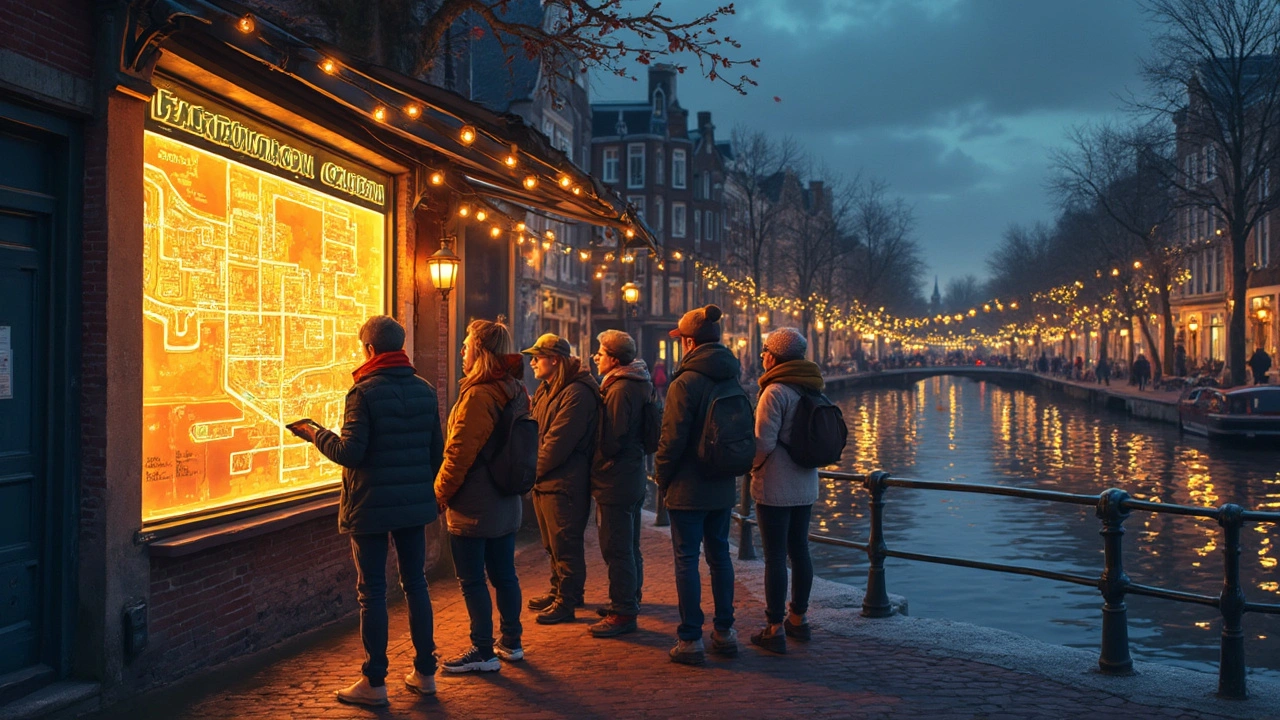
The Vibe: Locals, Visitors, and Cultural Changes
Walk around De Wallen at night and you’ll feel a weird but interesting mix of curiosity, business as usual, and flash-mob level crowds. What surprises most people isn’t the big red windows—it’s how the district works like any other busy neighborhood in Amsterdam. Locals still cycle to night shifts, students grab fries at FEBO, and regulars queue for stropwafels right next to neon-lit brothel doors. Nobody treats it like a shameful secret: for years, families have lived right inside this district, and the sex workers’ union (PROUD) commands lots of respect.
This part of town is always packed with tourists. You’ll see guided groups with umbrellas, couples holding hands, and packs of friends on the hunt for their next bar. When there’s a big event—like King’s Day or the Amsterdam Light Festival—the crowds swell, but it rarely gets rowdy. Most visitors want to gawk, maybe laugh, or try something just risky enough for a good story back home. Amsterdam police and camera systems keep the vibe safe, but party culture can get out of hand, especially on busy weekends or around Leidseplein. Weekdays tend to be a little calmer.
The city’s pretty clear about what’s okay and what’s not. No photos, don’t block doors, and don’t harass sex workers. Locals tend to get annoyed by big bachelor parties and disrespectful tourists (the ones shouting or peeking behind curtains). The city’s been trying to fix some of these issues; in 2024, Amsterdam started banning tours through the busiest sex work streets after 7 p.m., hoping to tone down the so-called “zoo effect”—where tourists treat working people like attractions. As Amsterdam’s mayor Femke Halsema said,
“We want to show respect to sex workers, rather than making them a spectacle for a loud crowd.”
This whole area is changing fast. Legal weed and sex work used to be the edge; now, city leaders are moving some sex windows toward the city’s outskirts to give residents more peace and make Amsterdam Red Light District a little less of a tourist circus. People still flock here, but the city hopes to keep the vibe respectful and safe for everyone—locals, sex workers, and yes, even the occasional gawking tourist.

